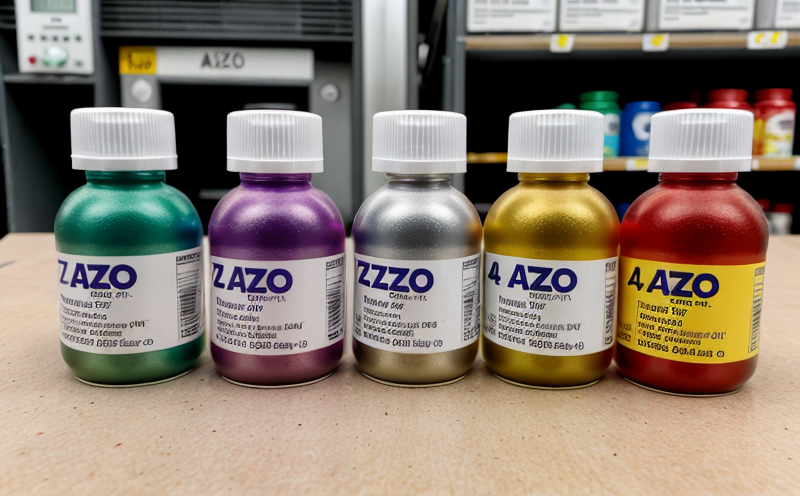Testing of copper content in textile dyes and finishes
The testing of copper content in textile dyes and finishes is a critical step in ensuring compliance with international standards, safeguarding product safety, and maintaining consumer trust. Copper is an essential metal used in various industries; however, excessive or inappropriate use can lead to environmental concerns, health risks, and regulatory issues.
In the textile sector, copper content testing ensures that dyes and finishes are free from harmful levels of this metal, which could potentially leach into the environment during production, processing, or end-use. This service is particularly important for ensuring compliance with regulations such as Oeko-Tex Standard 100, REACH (Registration, Evaluation, Authorization and Restriction of Chemicals), and similar national and regional standards.
The testing process involves several key steps: sample preparation, which includes the dissolution of the dye or finish in a suitable solvent; analysis using precise instrumentation such as Inductively Coupled Plasma Mass Spectrometry (ICP-MS) or Atomic Absorption Spectroscopy (AAS); and finally, interpretation of results against specified limits. This service ensures that textile products are safe for consumers and comply with regulatory requirements.
The importance of this testing cannot be overstated. Copper, though essential in small quantities, can pose risks if present at high levels. For instance, excessive copper content might lead to allergic reactions or skin irritations when worn as clothing. It is also important to note that the presence of certain forms of copper can indicate contamination from industrial processes or improper handling.
Our laboratory uses state-of-the-art equipment and follows internationally recognized standards such as ISO 17025, ensuring accurate and reliable results. We employ highly skilled analysts who have extensive experience in textile testing to provide clients with comprehensive reports that include detailed information about the copper content found in their samples.
The service is designed to cater to various stakeholders within the textiles industry including quality managers, compliance officers, R&D engineers, and procurement specialists. By providing accurate data on copper levels, we enable these professionals to make informed decisions regarding product development, sourcing, and manufacturing processes.
Applied Standards
| Standard | Description |
|---|---|
| ISO 17025:2017 | Laboratory accreditation requirements, ensuring the competence of testing laboratories. |
| Oeko-Tex Standard 100 | A global textile standard that sets strict limits on harmful substances including copper content in textiles. |
| REACH (Art. 33) | Regulation of chemicals, their safe use, and restrictions on the marketing of articles containing certain hazardous elements like copper. |
| ASTM D5456 | American Society for Testing and Materials standard method for determining trace metals in textile finishing agents using ICP-MS. |
Benefits
The testing of copper content offers numerous advantages to those involved in the textiles industry. Firstly, it ensures that products meet stringent regulatory requirements, thereby safeguarding against potential legal actions and fines. Compliance with such standards can also enhance brand reputation by demonstrating a commitment to quality and safety.
Secondly, this service helps companies identify any issues early on in their supply chain or manufacturing processes, allowing them to address these problems proactively rather than reactively. Early detection of copper contamination allows for corrective actions that prevent further production losses or rework costs.
In addition, ensuring proper copper levels can improve the durability and performance of textile products over time. For instance, maintaining appropriate copper content in dyes helps to enhance colorfastness properties, resulting in longer-lasting garments. This not only benefits manufacturers but also consumers who appreciate high-quality products.
Finally, regular testing supports continuous improvement initiatives by providing valuable data that can be used to refine production methods and formulations. By continuously monitoring copper content, companies can stay ahead of changing market demands and regulatory trends.
Competitive Advantage and Market Impact
In today’s competitive global market, maintaining a high level of quality control is essential for any textile manufacturer. By offering comprehensive copper content testing services, we provide our clients with an important tool that contributes to their overall success in the industry.
Our service allows companies to differentiate themselves from competitors by ensuring superior product quality and safety. This can be a significant factor when it comes to winning new contracts or retaining existing ones. Customers appreciate knowing they are dealing with partners who adhere strictly to international standards, thus reducing risks associated with non-compliance.
Moreover, staying ahead of regulatory changes is crucial for maintaining market relevance. Our laboratory keeps abreast of all relevant updates and ensures that our testing methods align with the latest requirements. This proactive approach not only protects clients from potential legal challenges but also positions them as leaders in their respective fields.





